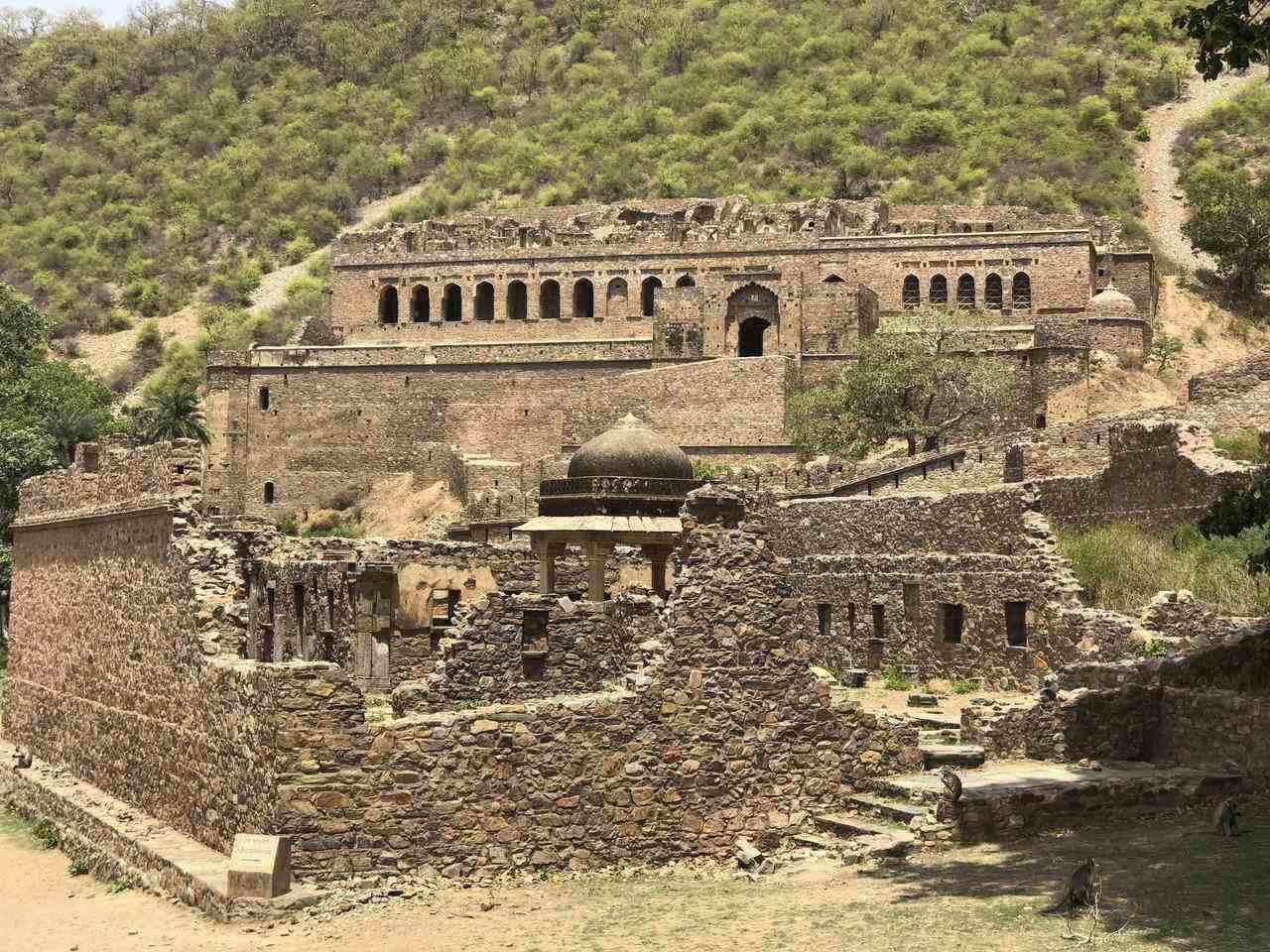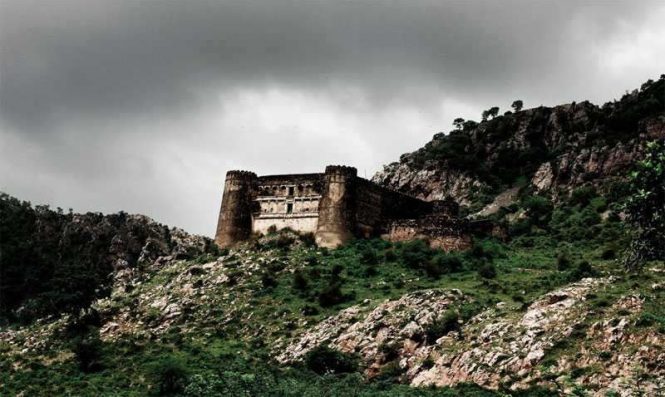The fort of Bhangarh is located 50 kilometers from the Sariska Sanctuary between the city of Jaipur and Alwar. The fort was constructed in the 17th century by Raja Madho Singh, the younger brother of the great Mughal general, Man Singh of Amber. Besides the royal palace, Bhangarh had over 9,000 houses until 1720 after which it gradually diminished in population. The Bhangarh fort along with the whole township was protected by three successive fortifications and five massive gates. The fort houses remnants of grand havelis, temples and deserted marketplaces within its premises, indicating the fort’s prosperity in its heydays. Thought to be a haunted place, Bhangarh fort nevertheless attracts hordes of tourists owing to its seren

History of Bhangarh Fort
As the name suggests, Bhangarh fort is situated in Bhangarh village in Rajasthan’s Alwar district. A quick check on the Bhangarh Travel Guide will give you the technical details about its latitude and longitude, weather, temperature and about the hotspots of the area. What it will fail to highlight is the presence of the Aravali hills that act as a guard to the Bhangarh fort. A lesser-known fact is that Bhangarh itself is a prehistoric site with several temples in Rajasthan havelis that are the crowns of Rajasthan royalty.
Being a prehistoric site, the town of Bhangarh is an archeological site and is under the protection of Archeological Survey of India (ASI) and the same has a board placed at the borders of Bhangarh, stating that staying in the borders of the town before sunrise and after sunset is strictly prohibited.
The Beauty Known as Bhangarh Fort
A historical site in itself, the Bhangarh fort was built in the 17th century by Man Singh I who was a general in Akbar’s troops. The once flourishing town and fort suddenly became desolate and that left many people wondering, giving way to Bhangarh fort ghost story and legends we read about these days. However, before we proceed to the stories, here are a few things to know about Bhangarh Fort if you are actually planning a visit there. Firstly, the best time to visit the ruins is during winter when you can enjoy the trek uphill without gasping much. Secondly, do not go to the fort seeking just a brush with the paranormal, for Bhangarh and the fort is also beautiful and should be aesthetically viewed as well.

The trip to Bhangarh fort is beautiful too, with the greenery around and the Aravali hills looming upfront. Another interesting thing is the fort is in close proximity to Sariska National Park which is a popular tiger reserve of India. Structurally, the fort is said to be inspired by the medieval Shahjahanabad city with massive wooden gates at the four sides and the sides of the precinct carved with ornate small temples and waterfalls to aid airflow, thereby keeping the space cool.
What catches attention is the fact that unlike a typical Rajput fort, the Bhangarh Fort is not built atop a hill, rather, the three green hills act as a barrier behind the fort. Once you enter the fort premises, you will be greeted by a vast expanse of ruins that lead up to a really old banyan tree – said to be over 300 years old. The fort itself has suffered less damage and once you are over the magnificence of the old tree, you will be greeted by the sheer beauty of the fort.

No comments:
Post a Comment